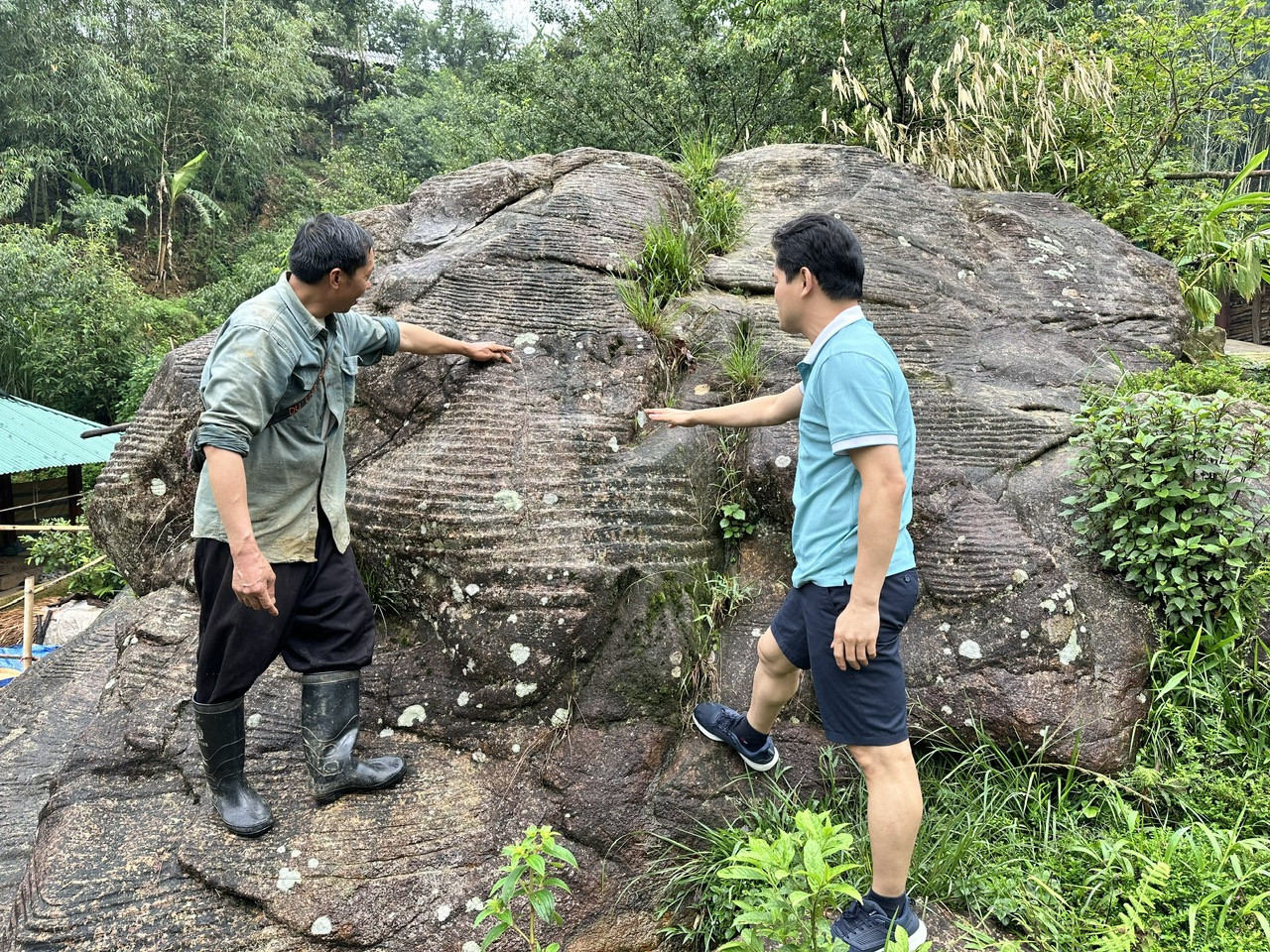
Sin Suoi Ho village in Sin Suoi Ho commune is a tourist attraction, which is the home of Mong people. Located just 30 kilometers from Lai Chau City’s center, at the height of 1,500 meters above sea water level, it has wonderful landscapes and cool weather all year round.
Sin Suoi Ho, in Mong language, means golden spring.
For the last 10 years, Sin Suoi Ho has been recognized as a community tourism village with a methodical approach which satisfies travelers. It is not only known for typical beauty of the terraced fields of the northwestern land, Sin Suoi Ho is also the place where ancient stone slabs with special engravings have existed for many years.
Vang A Chinh, head of Sin Suoi Ho hamlet, said the ancient stones with special engravings are called by locals as ‘da so do’, which implies that ancient Mong people made engravings to prove their ownership over a certain field reclaimed (‘so do’, or red book, today means land-use right certificates).
“Each engraving meant a new terraced field piece which has been reclaimed,” Chinh explained.
Chinh said the ancient stones help attract travelers to the village. The communal authorities have installed a board with the words ‘Da so do – di san co dai cua nguoi Mong’ (Red Book Stone, the ancient heritage of Mong people). Many travelers to Sin Suoi Ho feel curious when hearing about the special stones and go there for discovery.
According to Chinh, there is no official document that affirms the accuracy of the theory about dividing fields through the engravings on ancient stones. However, if considering the engravings and customs of Mong people in the locality, the theory proves to be reasonable and it could be a suggestion for researchers.
The engravings on ancient stone slabs bear a striking resemblance to the terraced field squares in Sin Suoi Ho village. When compared with the terrain and layout of the terraced fields, the engravings on the ancient stone slabs seem to mirror the valleys, hillsides, and the arrangement of water sources flowing down the terraced fields.
These stone slabs gently slope towards the hillsides and are located near people's homes. They bear orderly engravings that, when observed, evoke images of the terraced fields.
Additionally, there are clearly engraved traces of writing, represented by certain shapes that convey specific messages. However, the characters have not been deciphered. Scientists speculate that the stones and their engravings reflect the land management methods employed by ancient peoples. These enigmatic stones attract visitors every day.
Doan Bong